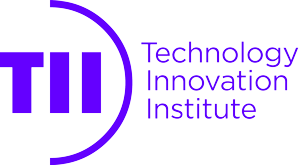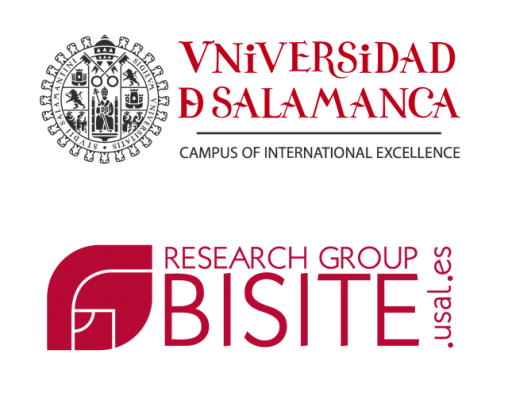Between 2020 and 2030, the number of IP connections will rise by 55% annually, reaching 607 exabytes in 2025 and 5,016 exabytes in 2030. In addition, the rise of innovative vertical services poses new critical challenges that were not accounted for during the design of 5G networks. Indeed, future wireless networks will have to support many innovative vertical services, each with its own specific requirements, e.g.
- End-to-end latency of 1 ns and reliability higher than 99.999% for URLLCs.
- Terminal densities of 1 million of terminals per square kilometer for massive IoT applications.
- Per-user data-rate of the order of Terabit/s for broadband applications.
- Terminal location accuracy of the order of 0.1m for V2X communications.
In order to face these new challenges, it will not be sufficient to develop only a more performing transmission technology, as it was the case for all previous wireless generations, which focused only on improving the efficiency of the transmission and reception technology. Being simply able to transmit data at a faster rate does not ensure the flexibility required to accommodate diverse classes of users with extremely diverse service requirements. Besides developing faster transmission technologies, future research efforts should be aimed also at improving the network infrastructure itself, making it flexible enough to automatically adapt to sudden wireless scenario changes and rapid traffic evolutions, and customizable according to traffic conditions and requirements. In this context, a recent technological breakthrough that holds the potential to revolutionize the traditional approach to wireless network design and operation is that of Reconfigurable Intelligent Surface (RIS). From 1G to 5G, every wireless generation has been designed assuming that the wireless environment is fixed by nature and cannot be modified, but only compensated through the design of sophisticated transmission/reception schemes and feedback mechanisms. However, after five generations of wireless networks, the improvements that can be expected by continuing to operate only on the endpoints of the communications, are not enough to meet the requirements expected from beyond 5G networks. Instead, huge performance gains can be expected by treating the wireless environment as an additional variable to be optimized. This is made possible thanks to the use of RISs, which are planar surfaces consisting of a large number of low-cost elements, known as meta-atoms over which active elements with subwavelength dimensions, known as meta-atoms, are deployed. Meta-surfaces are not bounded by conventional reflection and diffraction laws, but instead can modify the reflection amplitude and phase shift of the radio wave impinging on them in a fully customizable way. This enables the control of the direction of the reflected/refracted signal. Moreover, the electromagnetic properties of the surface can be dynamically reconfigured, so that the effect of the RIS on the incoming radio waves can be adapted in real-time in response to the dynamic wireless channel and to dynamic wireless channels, sudden changes in the network and/or in the traffic demands. Since RIS eliminates the use of transmit RF chains and operates mainly in short range, it can be densely deployed with scalable cost and low energy consumption, yet without the need of sophisticated interference management among passive RISs. Furthermore, Since RIS eliminates the use of transmit RF chains and operates mainly in short range, it can be densely deployed with scalable cost and low energy consumption, yet without the need of sophisticated interference management among passive RISs. Furthermore, RISs can be deployed on the walls of buildings or can be used to coat the environmental objects between the communicating devices, which effectively makes the wireless channel a new variable to be optimized, besides the design of the transmitters and receivers. This thus provides a new degree of freedom (DoF) to further enhance the wireless communication performance and paves the way to realizing a smart and reconfigurable wireless environment. This thus provides a new degree of freedom (DoF) to further enhance the wireless communication performance and paves the way to realizing a smart and reconfigurable wireless environment.
The topic of RIS-based wireless communications is emerging as one of the main research directions in the wireless community, as witnessed by the great deal of research contributions that are appearing on this topic, by the several special issues published on RIS, and by the recent establishment of dedicated IEEE ComSoc emerging technologies initiative and two special interest groups on RIS in the Wireless Technical Committee and in the Signal Processing and Computing for Communications Technical Committee. It should be mentioned that all of the workshop organizers hold officer positions in this initiative and/or technical committees. Thus, the workshop will have the support of the Emerging Technologies Committee, Wireless Technical Committee and the Signal Processing and Computing for Communications Technical Committee. This guarantees a broad participation to the workshop, both in terms of submissions and of attendance.
This workshop focuses on attracting novel and solid contributions on the emerging topic of reconfigurable intelligent surfaces for future wireless communications. Both theoretical and more applied contributions are solicited, covering, but not necessarily limited to, the following topics.
- Joint active and passive beamforming design for RIS-empowered wireless networks
- Fundamental performance limits of RIS-empowered wireless networks
- Channel modeling for RIS-based systems
- Channel estimation for RIS-empowered wireless networks
- RIS sensing, computing, and communication
- Experimental results and testbed implementations of RIS
- Software-defined design and implementation of RIS-empowered wireless networks
- AI-inspired design of and management of RIS-empowered wireless networks
- Indoor/outdoor localization in wireless networks using RIS
- Multiple Access design for RIS-empowered wireless networks
- Deployment design of RIS in wireless networks
- Capacity and resource allocation for RIS-empowered wireless networks
- Distributed deployment and planning and network planning of RIS-empowered wireless networks
- Integration of RIS with state-of-the-art wireless technologies (e.g. small cells, Massive MIMO, NOMA, millimeter-wave communications, visible light communications, THz communication, free space optics, IoT, drones-aided communications, energy harvesting, physical layer security techniques, etc.)
The workshop accepts only novel and previously unpublished English-written papers, with a maximum length of six (6) printed pages (10-point font) including figures without incurring additional page charges (maximum 1 additional page with over-length page charge if accepted).
IMPORTANT DATES
Paper Submission Deadline: July 5, 2021 August 14, 2021
Paper Acceptance Notification: September 15, 2021
Camera-Ready: November 15, 2021





















